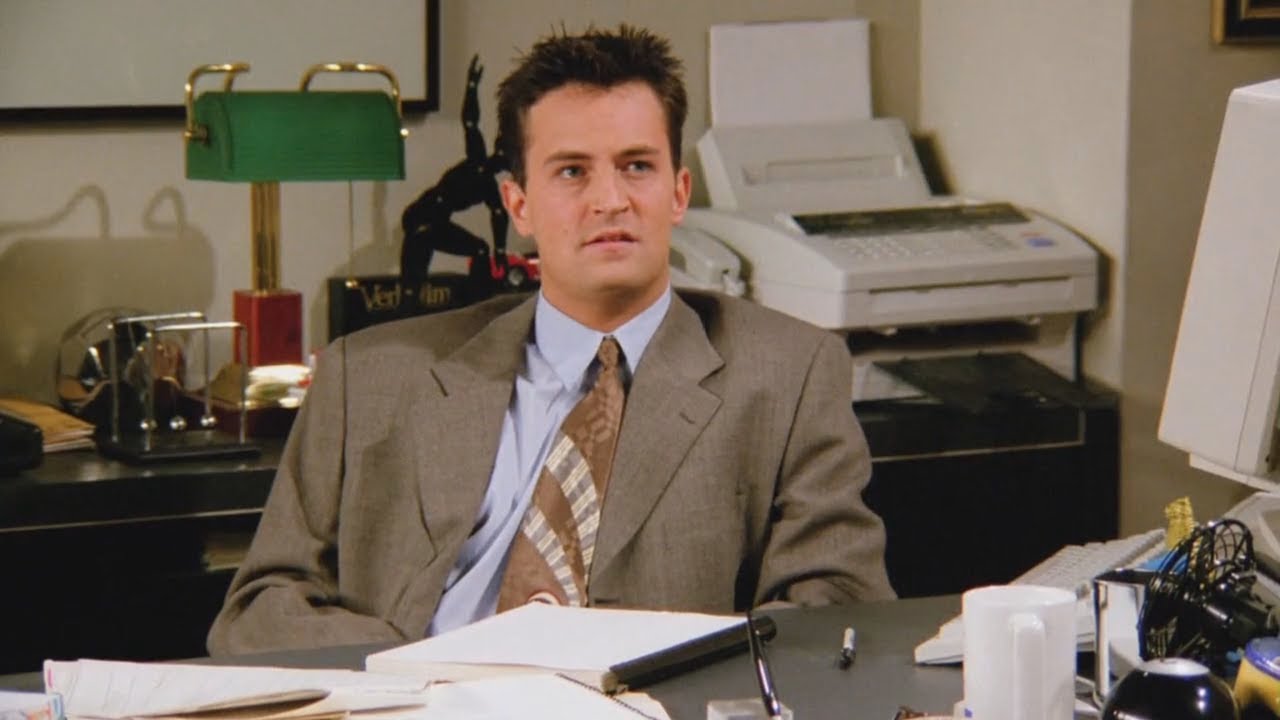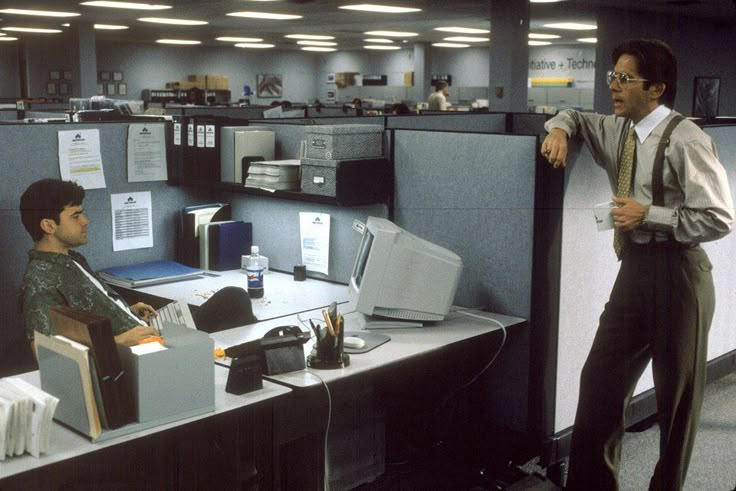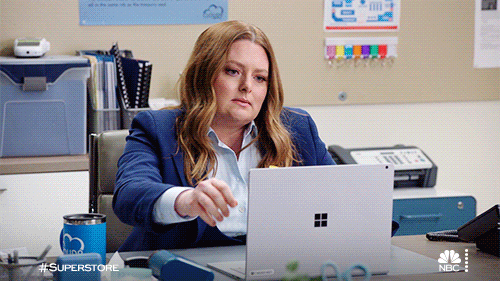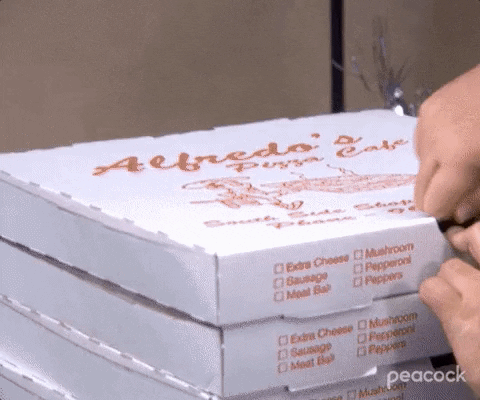Workplace nostalgia: How ‘90s office culture compares to today

Ah, the 1990s office—where fax machines hummed, landlines ruled, and the smell of fresh paper from the dot matrix printer filled the air. The only ‘ping’ you heard was from your AOL messenger, and meetings meant gathering in an actual conference room (no Zoom links required). It was an era immortalised in pop culture, from the disgruntled employees of Office Space smashing their malfunctioning printer to Chandler Bing's mysteriously vague job in Friends (seriously, what did he do?).
Fast forward to today, and the landscape has changed dramatically. Offices are sleeker, commutes are optional, and instead of faxing, we Slack. Let’s take a fun walk down memory lane and see how the '90s workplace stacks up against today’s remote-friendly, AI-powered, kombucha-on-tap world.
1. The Cubicle vs. The Coffee Shop
If you worked in the ‘90s, chances are you had a cubicle—your own little beige kingdom, complete with a bulky desktop computer and a rolodex full of phone numbers (because who memorised them?). You had a drawer full of office supplies, including white-out (for those report typos) and highlighters (for important documents). If you were feeling really wild, you might have brought in a desktop fan because air circulation was... questionable.
Today? Cubicles have been replaced with open floor plans and hot desking. The idea of “your desk” is gone—now, employees move between shared workspaces, couch lounges, and standing desks. Many opt to skip the office entirely, working from coffee shops with their noise-canceling headphones, sipping oat milk lattes while answering emails. Some companies have even done away with offices altogether, embracing a fully remote workforce.
2. Meetings: Conference Rooms vs. Zoom Fatigue
In the ‘90s, meetings were an event. You walked to an actual conference room, where someone had scribbled half-erased notes from the last session on the whiteboard. Maybe there was a tray of cookies, or if you were lucky, a fresh pot of coffee that didn’t taste like battery acid. Presentations meant overhead projectors with transparent slides, and someone always struggled to load them properly.
Today, meetings are digital. No more scrambling for a conference room—now, you just click a link and pray your Wi-Fi holds up. But virtual meetings come with their own challenges: talking over one another, the dreaded ‘Can you hear me now?’ moment, and the sinking realisation that no one changed out of their pajama bottoms. And let’s be real—half of us are answering emails in another tab while ‘listening.’
3. The Office Social Scene: Water Cooler Gossip vs. Virtual Happy Hours
Water cooler talk was the original Twitter thread. In the ‘90s, this was where real work happened—exchanging theories about The X-Files, dissecting the latest Seinfeld episode, or whispering about the mysterious disappearance of the breakroom stapler. Office friendships formed over casual conversations, and holiday parties were legendary (no one was checking Instagram stories the next day, so things got wild).
Today, office gossip happens in Slack DMs, and team bonding is scheduled on a Zoom happy hour (awkward silences included). The vibe has shifted—spontaneous chats have been replaced with emoji reactions and GIF wars. Some companies try to bring back the fun with virtual escape rooms or trivia nights, but let’s be honest: it’s just not the same as a spontaneous Friday night at the bar with coworkers.
And speaking of bar nights, some companies have fully embraced this shift by offering ‘hangover leave’—an actual day off after a night of partying. A company in Japan rolled this out, recognising that sometimes, employees need a day to recover from an epic office celebration. Imagine pitching that idea in 1995!
4. Hiring: Newspaper Job Listings vs. AI Recruiters
Remember scouring the newspaper’s classified section, circling job ads with a red pen, and mailing a resume (yes, mailing) with a carefully crafted cover letter? That was the ‘90s job hunt. If you were lucky, you had a friend who worked at the company and could put in a good word. Otherwise, it was a waiting game—checking your answering machine for a callback and hoping the HR rep didn’t lose your resume in a towering pile of paperwork.
Today, job hunting is instant. You apply online, your resume is scanned by an algorithm, and you might never interact with a human recruiter. Some companies, like Chipotle, even use AI chatbots to screen candidates before an actual interview. It’s efficient, but sometimes you wonder—do hiring managers even read resumes anymore?
Gone are the days of in-person handshakes and first impressions. Now, your LinkedIn profile does the talking, and your digital footprint is just as important as your skillset. Hope you didn’t post anything embarrassing in 2009!
5. Work Perks: Free Pizza vs. Mental Health Days
Ah, the good old-fashioned office perk—free pizza on Fridays, bagels in the breakroom, and maybe (if your company was fancy) a summer picnic. Health insurance? Sure. Gym memberships? Only if you worked at a really progressive company. Mental health wasn’t exactly a priority—if you were stressed, you sucked it up or took a ‘sick day’ (which HR always side-eyed).
Fast forward to today, and companies have leveled up their perk game. Free lunches? Standard. Nap pods? At some startups, yes. Unlimited PTO? More common than ever. And mental health? It’s no longer a taboo topic—many workplaces now offer therapy stipends, wellness apps, and official mental health days.
The perks are better than ever, but let’s be real: sometimes, nothing beats the pure joy of free office pizza.
Final Thoughts: The Best of Both Worlds
The ‘90s office had its charm—predictable routines, in-person camaraderie, and the pure satisfaction of hanging up on a spam fax. But today’s workplaces offer something we never imagined back then: flexibility, better work-life balance, and the ability to work from anywhere.
Would we trade our instant messaging and remote work for a return to cubicle life? Probably not. But hey, we do miss the days when meetings weren’t just another calendar link and office parties didn’t require a ‘mute’ button.













